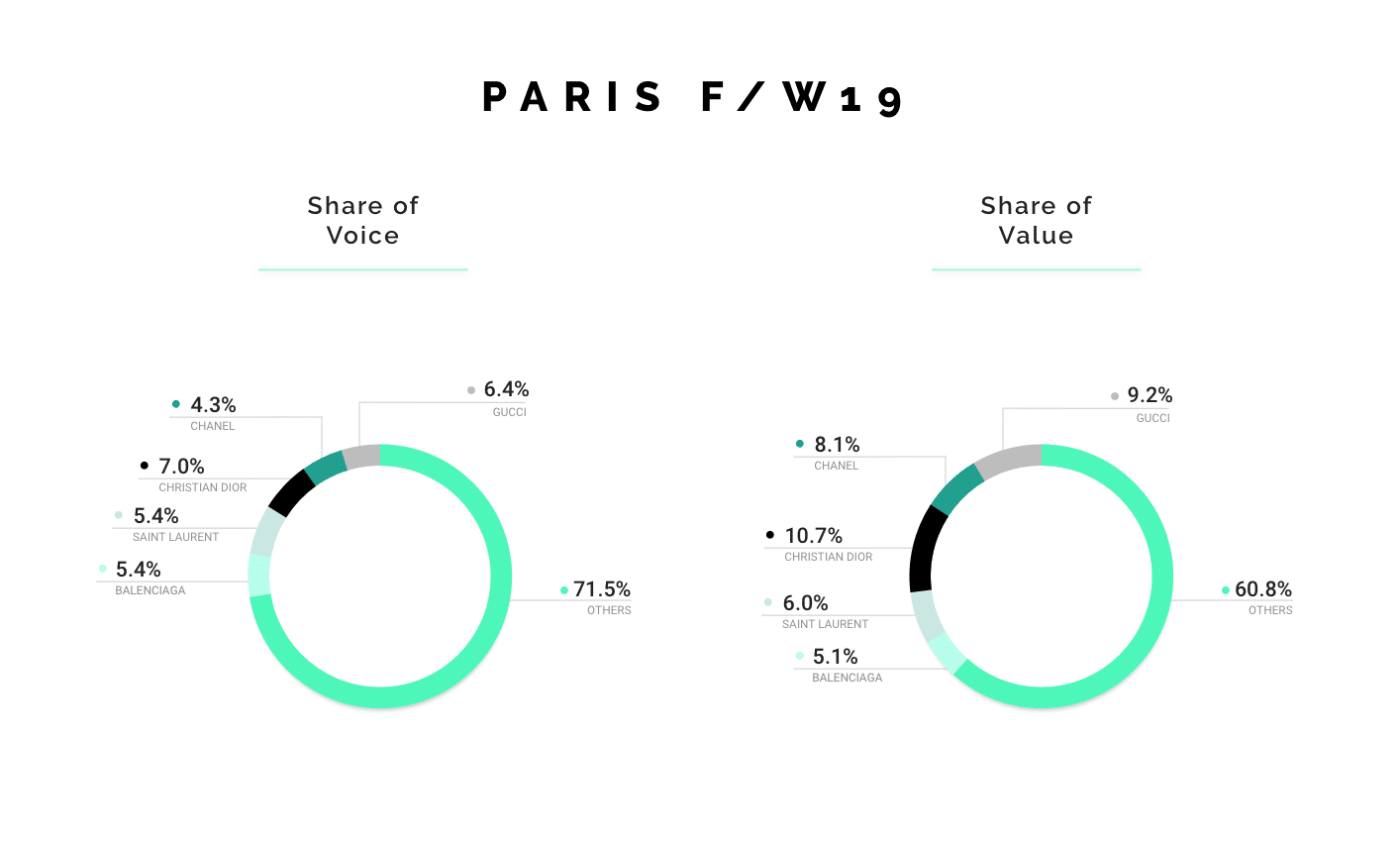Knowing your competitive landscape has become essential for modern-day marketing success. Companies that don’t use brand awareness metrics to monitor their performance against market trends can risk losing millions of dollars to their competitors.
There are many ways to monitor brand success, but in order to effectively monitor market position, companies must familiarize themselves with the concepts of Share of Voice and Share of Value. Simply stated, thinking about Share of Voice and Share of Value is like thinking how much of the media pie you’re getting during a specific time period or an event.
In this article, we will explain what Share of Value and Share of Voice are, why they are critical when it comes to maximizing your marketing ROI and why using them in your competitive benchmarking is essential for the success of your marketing strategy.
Why Competitive Benchmarking Is Important
When creating a marketing campaign, you might want to jump right in and see results. However, setting up a strategy is vital to the success of any key initiative as it sets out expectations.
The starting point of any successful strategy is to gain a deeper understanding of your market.
Effective marketing teams should actively compare marketing and communication strategies against a standard where performance metrics are foundational. Understanding the way the industry functions, allows companies to differentiate their brand, uncover untapped opportunities, and set up ambitious –but realistic—goals.
Two essential brand awareness metrics to consider when making strategic marketing decisions are Share of Voice and Share of Value.
Share of Voice
Share of Voice refers to the percentage of mentions generated by a brand, segment, or Influencer during a specific period (ex: monthly) or an event (ex: Fashion Week, BeautyCon or Baselworld). Share of Voice can be used to identify the most talked about brand during an event or to benchmark your marketing & communications strategies against your competitors’.
Measuring this is an effective way to gauge the relative success of your brand. Knowing the share of your brand mentions in your industry gives you a strategic advantage as it allows you to measure the impact of your campaigns, identify opportunities, and implement strategies to increase your brand’s influence online.
Understanding your Share of Voice also enables you to analyze the topics, tactics, and channels that are most effective for both you and your competitors, which helps you learn what you are already doing well and what areas you can improve on. Equipped with these insights, you can discover how best to outperform your competition and differentiate your brand.
Share of Value
Share of Value refers to the percentage of Media Impact Value™ generated by a brand, a segment, or an Influencer, during a specific period (ex: monthly) or an event (ex: Fashion Week, BeautyCon or Baselworld).
Understanding the Media Impact Value generated by your competitors’ global strategies is critical in helping you make more effective decisions and investments. By assigning a monetary value to each of your competitors’ activities, you can estimate what return a similar campaign could bring to your brand and use this data as bulletproof insights into the market you operate in.
Share of Voice and Share of Value at Paris Fashion Week FW19
In this example, we tracked the impact brands generated across online, print and social media at Paris Fashion Week FW19, using our brand decisioning platform, Insights. The brand awareness metrics uncovers which brands have been able to win when it comes to Share of Voice and Share of Value at the event, giving insights into their marketing and event strategies.

The total MIV® of Paris Fashion Week FW19 was roughly $210M. Christian Dior had the highest Share of Value (11%) followed by Gucci (9%), Chanel (8%), Saint Laurent (6%) and Balenciaga (5%).
Despite being ranked number 3 in terms of Share of Value, the Chanel team performed extremely well when it came to their marketing and communication strategy, where the 4% of mentions they received created an astonishing 8% Share of Value. The Balenciaga team, on the contrary, should look at ways to improve their strategy for future seasons, where despite the 5% in terms of Share of Voice (1% more than Chanel), they have been able to generate just 5% in Share of Value.
To sum up…
Regularly executing a competitive benchmark analysis is a game-changer for brands who want to be leaders in their industry. If your goal is to get a better ROI, Share of Voice and Share of Value are the brand awareness metrics that you should focus on.
Insights makes calculating Share of Voice and Share of Value easier. It enables brands to understand how their marketing and PR efforts impact their brand equity across different Voices, channels, periods, and regions, as well as easily assign a monetary value to those activities.
To learn more about how Launchmetrics can help you with both media benchmarking and competitive intelligence, explore Insights:
*MIV® is a registered trademark in the European Union.

